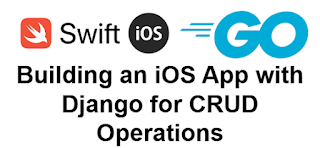Building an iOS App with Go for CRUD Operations
Here’s a complete end-to-end example of a CRUD app using Go for the backend and Swift for the iOS frontend. The app will manage a simple list of tasks.
Code:
1. Backend: Go
Setup
- Install Go: https://go.dev/
- Install dependencies:
Use theGinframework for HTTP andGORMfor database interactions. Install via:
Code: main.go
Here’s the complete code for a simple CRUD API:
Run the Server
The server will run on http://localhost:8080.
2. Frontend: Swift
Setup
- Open Xcode and create a new SwiftUI App project.
- Name it something like
TaskManager.
Networking Code
Create a Swift file called API.swift for the networking layer.
SwiftUI Views
Edit the ContentView.swift file to build the UI.
3. Running the App
Backend:
- Ensure the Go backend is running.
iOS App:
- Run the app in the simulator or on a real device.
- Replace
localhostinAPI.swiftwith your machine's local IP if testing on a real device.
This setup gives you a fully functional CRUD app where:
- Tasks can be listed, created, and updated in real-time between the backend and the iOS app.









